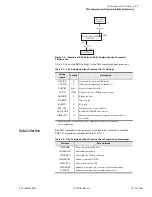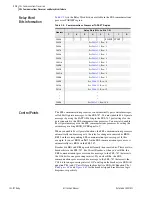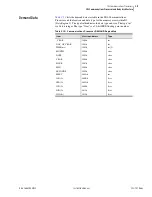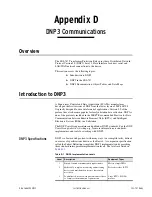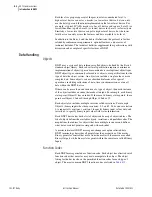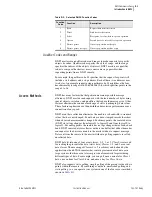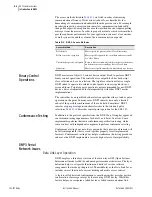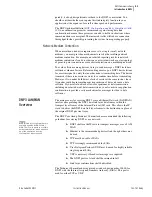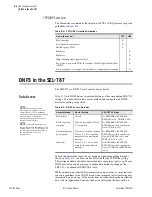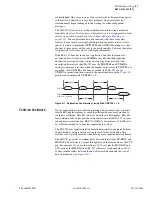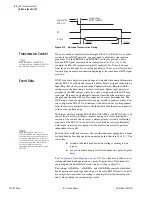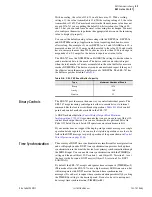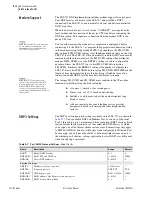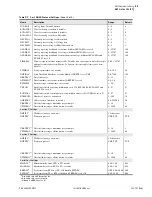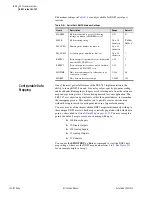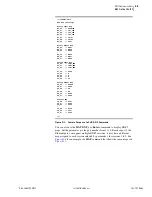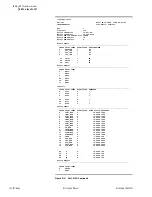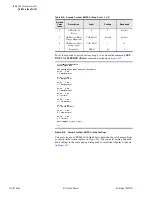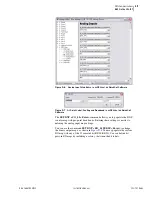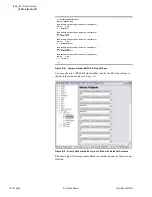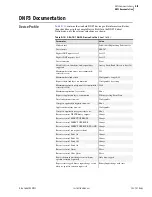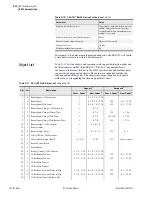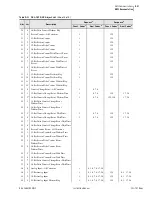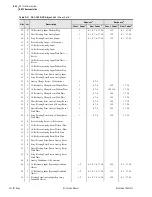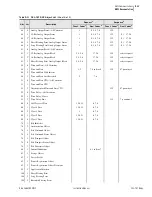
D.9
Date Code 20081022
Instruction Manual
SEL-787 Relay
DNP3 Communications
DNP3 in the SEL-787
With no scaling, the value of 12.632 would be sent as 13. With a scaling
setting of 1, the value transmitted is 126. With a scaling setting of 3, the value
transmitted is 12632. You must make certain that the maximum value does not
exceed 32767 if you are polling the default 16-bit variations for Objects 30
and 32, but you can send some decimal values using this technique. You must
also configure the master to perform the appropriate division on the incoming
value to display it properly.
You can set the default analog value scaling with the DECPLA
n
, DECPLV
n
,
and DECPLM
n
settings. Application of event reporting dead bands occurs
after scaling. For example, if you set DECPLA
n
to 2 and ANADBA
n
to 10, a
measured current of 10.14 amps would be scaled to the value 1014 and would
have to increase to more than 1024 or decrease to less than 1004 (a change in
magnitude of ± 0.1 amps) for the device to report a new event value.
The SEL-787 uses the NUMEVE
n
and AGEEVE
n
settings to decide when to
send unsolicited data to the master. The device sends an unsolicited report
when the total number of events accumulated in the event buffer for master
n
reaches NUMEVE
n
. The device also sends an unsolicited report if the age of
the oldest event in the master n buffer exceeds AGEEVE
n
. The SEL-787 has
the buffer capacities listed in
Binary Controls
The SEL-787 provides more than one way to control individual points. The
SEL-787 maps incoming control points either to remote bits or to internal
command bits that cause circuit breaker operations.
lists control
points and control methods available in the SEL-787.
A DNP3 technical bulletin (
Control Relay Output Block Minimum
Implementation 9701-002
) recommends that you use one point per Object 12,
control block output device. You can use this method to perform Pulse On,
Pulse Off, Latch On, and Latch Off operations on selected remote bits.
If your master does not support the single-point-per-index messages or single
operation database points, you can use the trip/close operation or use the code
field in the DNP3 message to specify operation of the points shown in
.
Time Synchronization
The accuracy of DNP3 time synchronization is insufficient for most protection
and oscillography needs. DNP3 time synchronization provides backup time
synchronization in the event the device loses primary synchronization through
the IRIG-B input. You can enable time synchronization with the TIMERQ
n
setting and then use Object 50, Variation 1, and Object 52, Variation 2, to set
the time via the Session
n
DNP3 master (Object 50, variation 3 for DNP3
LAN/WAN).
By default, the SEL-787 accepts and ignores time set requests (TIMERQ
n
=I).
(This mode allows the SEL-787 to use a high accuracy, IRIG time source, but
still interoperate with DNP3 masters that send time synchronization
messages.) It can be set to request time synchronization periodically by setting
the TIMERQ
n
setting to the desired period. It can also be set to not request,
but accept time synchronization (TIMERQ
n
=M).
Table D.6
SEL-787 Event Buffer Capacity
Type
Maximum Number of Events
Binary
1024
Analog
100
Counters
32
Summary of Contents for SEL-787
Page 1: ...20081022 SEL 787 Transformer Protection Relay Instruction Manual PM787 01 NB ...
Page 6: ...This page intentionally left blank ...
Page 12: ...This page intentionally left blank ...
Page 18: ...This page intentionally left blank ...
Page 78: ...This page intentionally left blank ...
Page 206: ...This page intentionally left blank ...
Page 280: ...This page intentionally left blank ...
Page 334: ...This page intentionally left blank ...
Page 376: ...This page intentionally left blank ...
Page 388: ...This page intentionally left blank ...
Page 474: ...This page intentionally left blank ...
Page 508: ...This page intentionally left blank ...

